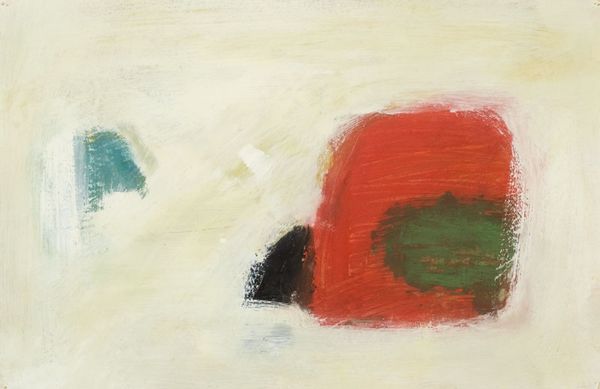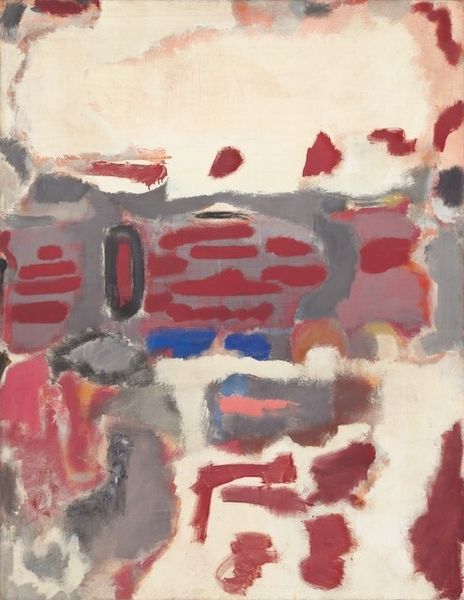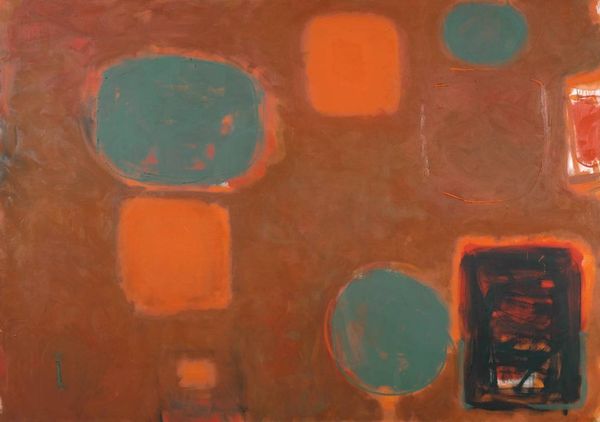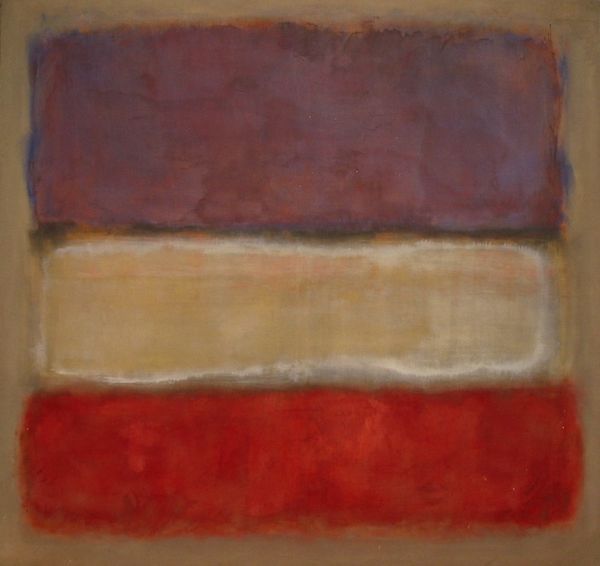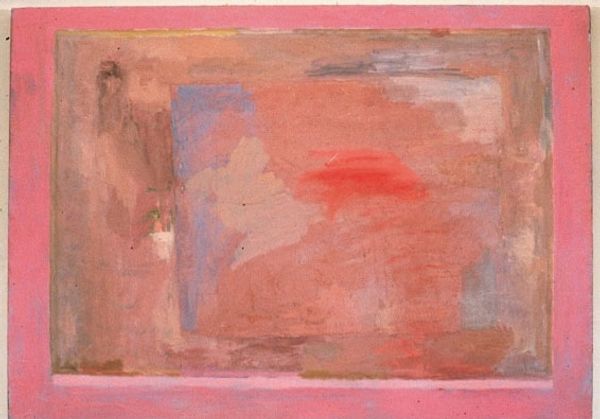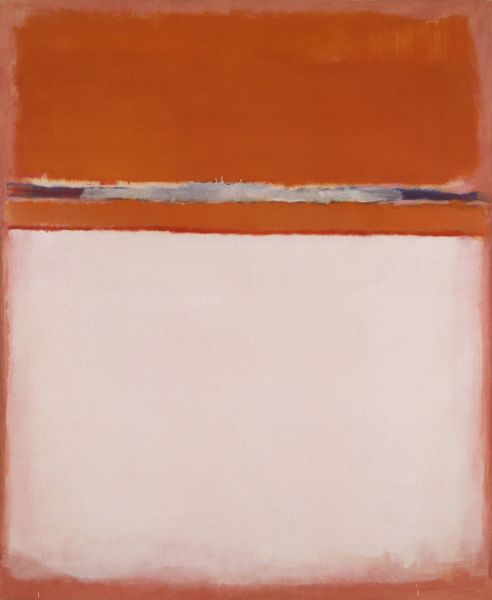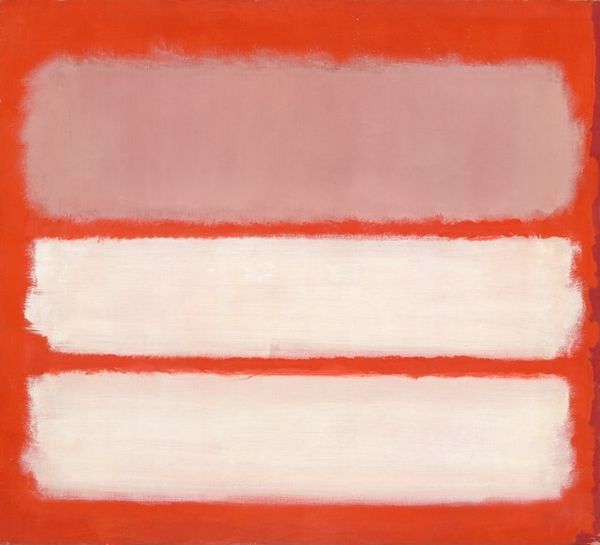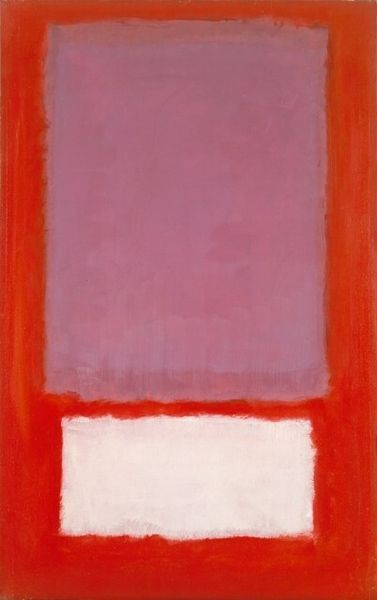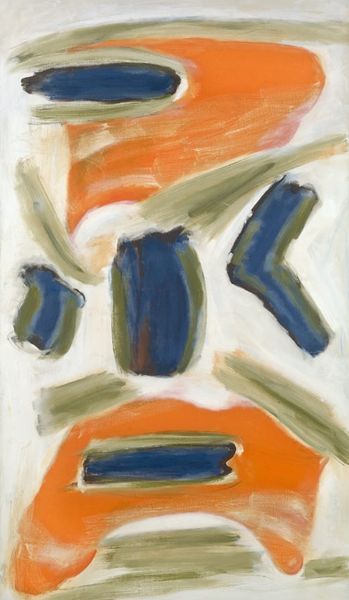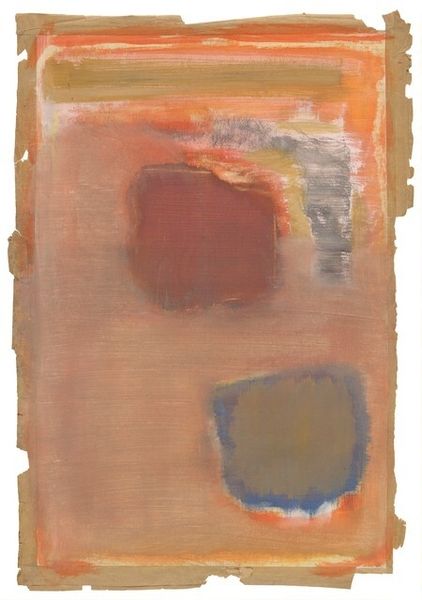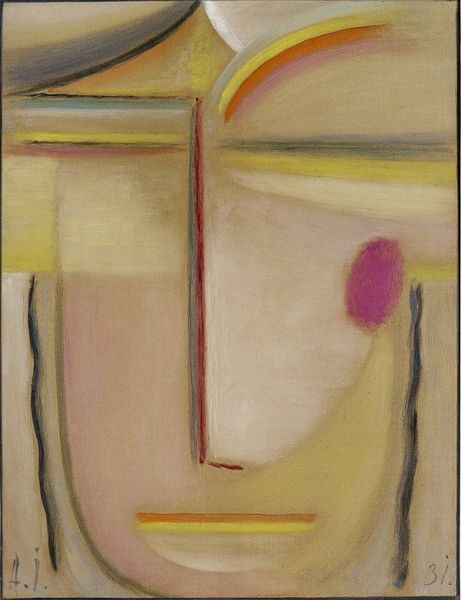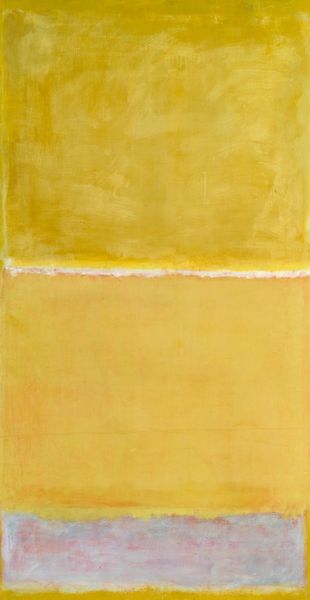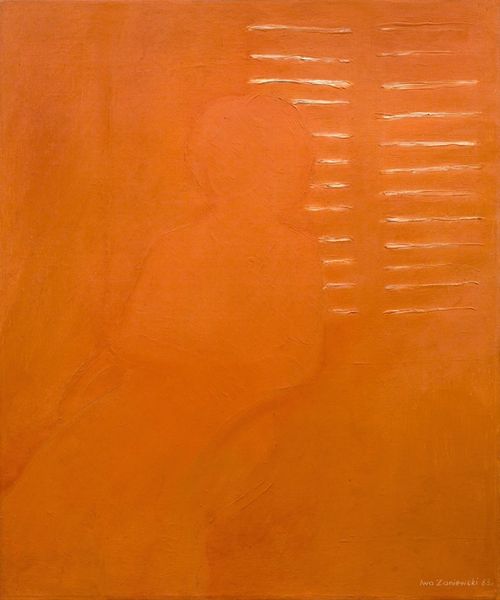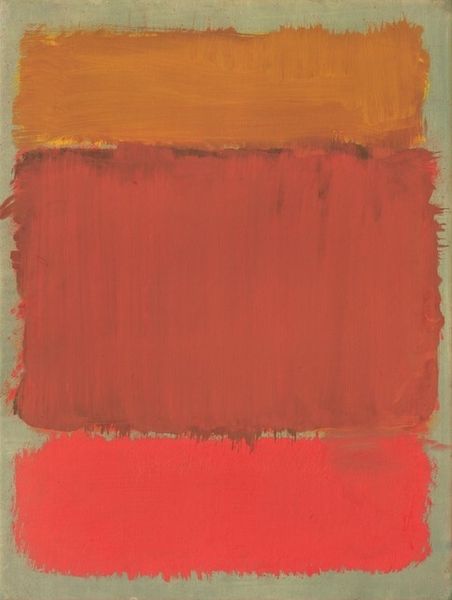
Dimensions: overall: 76.1 x 93.7 cm (29 15/16 x 36 7/8 in.)
Copyright: National Gallery of Art: CC0 1.0
Curator: Standing before us is an Untitled painting from 1948 by Mark Rothko. Immediately noticeable are two brick-red, horizontal rectangles hovering within a hazy, indeterminate field of pale yellows, grays, and whites. What are your initial impressions? Editor: It strikes me as incredibly muted, almost faded, yet with a strong undercurrent of suppressed energy emanating from those blocks of red. There's something intensely emotional, but also restrained, about its visual simplicity. Curator: Indeed. Considering Rothko's artistic project, these simple color fields were the result of meticulous work with layers of thin oil paint. Think about how these aren't simple blocks of color—they were achieved with multiple translucent washes of pigment, modulating hue and saturation. In 1948, the shift toward purely abstract art mirrored social concerns surrounding trauma and existential crisis during postwar anxieties. Editor: So you're pointing toward the social milieu influencing Rothko's choices and the availability of materials, which led to the ethereal surface he creates with his brushes. From a Formalist perspective, it's the way the shapes interact that commands my attention, however. The slightly uneven edges of those forms create a subtle vibration. There’s a dialogue between the precision of the shapes and the looseness of the brushwork. The formal play generates that emotional tension that captures our attention. Curator: Exactly! Consider, though, what Rothko aimed to evoke beyond just formal relationships. By denying conventional representation, he sought to create artworks capable of expressing elemental human emotions such as tragedy and ecstasy, a form of connection, not simply visual engagement. One can wonder about the economic considerations and material availability Rothko dealt with as he produced such grand and striking creations. Editor: Still, regardless of Rothko's intent, there remains something universally legible about his aesthetic decisions and visual language. Color evokes particular feelings while horizontal lines infer specific formal choices with impact for the viewer. Ultimately, whether consciously or unconsciously, those two large swathes demand attention. Curator: In a way, this reveals how formalism and materialism meet when assessing the work. Editor: I’d have to agree, each contributes something essential to our comprehension.
Comments
No comments
Be the first to comment and join the conversation on the ultimate creative platform.
